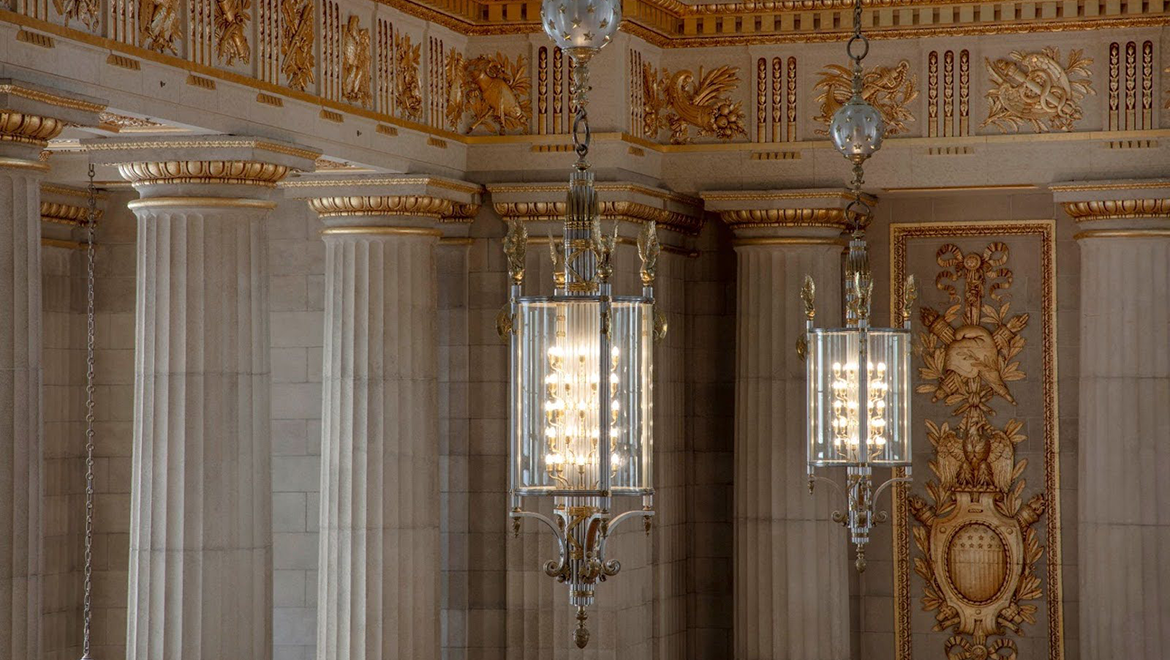
GSA celebrates Preservation Month 2024
Post filed in: Federal Buildings | Historic Preservation Month
Preservation Month is an opportune time to reflect upon GSA’s commitment to preserving some of the country’s most significant historic places. On a daily basis, dedicated GSA staff put their energy, creativity, and work into ensuring that our historic buildings function as safe, sustainable, cost effective, and high-performing workplaces for our customers.
GSA’s stewardship mission is to maintain the architectural excellence of our more than 500 historic buildings while also keeping them safe, accessible, and secure. GSA’s historic preservation program provides technical and strategic expertise to promote the viability, reuse, and integrity of historic buildings GSA owns, leases, and acquires.
GSA owns 523 buildings listed in or eligible for the National Register of Historic Places, the nation’s official list, and they comprise nearly 30% of our owned inventory and house nearly 40% of our rentable square footage. Recent additions to the National Register include the 1967 Joe Skeen Federal Building and U.S. Courthouse in Roswell, New Mexico, which expertly blends modernism with regionalism, including Mayan, Pueblo, and Southwest design references.
Telling the full stories of our historic buildings is a vital part of the preservation ethic. A special exhibit at the U.S. Supreme Court, Integration Must Proceed Forthwith, features the judge’s bench from GSA’s Richard Sheppard Arnold U.S. Courthouse, where the Little Rock Nine, a group of black students, sued for the right to attend the then all-white Central High School. In the Cooper v. Aaron case, the Little Rock School District fought to delay desegregation in a test of the landmark Brown v. Board of Education Supreme Court ruling.
After the public exhibit concludes, GSA’s partnership with the U.S. District Court for the Eastern District of Arkansas will result in the return of the bench to an era-faithful courtroom that will share the story of the Little Rock Nine as part of a nationwide civics and judicial learning initiative highlighted by Chief Justice John Roberts. Find out how to visit the exhibition here.
Working with the National Renewable Energy Laboratory in collaboration with industry, the Center for Historic Buildings and the Office of High Performance Green Buildings are researching and developing an embodied carbon calculation protocol. Proposed for use across GSA’s inventory, this data driven tool aims to help with portfolio planning decision-making by assessing the embodied carbon avoidance, social, economic, and cultural values of historic buildings to demonstrate the soundness of reinvestment in the modernization of GSA’s historic federal building legacy.
Section 111 of the National Historic Preservation Act allows federal agencies to lease excess space in historic properties to private entities and reinvest those earnings into historic preservation projects. Recently, the Andrew W. Mellon Auditorium, one of the most significant historic interior spaces in Washington, reaped the benefits of its contributions to this effort over many years. GSA completed restoration of the historic finishes, including repairs to the acoustical stone and gilding, decorative paint, and replacement of the non-original floor. You may learn more about the award-winning team who carried out this impressive project in our just-released film, Renewing an Icon.
These are just a few examples of GSA’s federal building stewardship and the resilience of our historic buildings to address changing needs and emerging challenges. As we celebrate Preservation Month throughout May, we reaffirm our commitment to conserve our irreplaceable cultural assets as a critical component of GSA’s mission to deliver the best value in real estate for the American people.

 U.S. General Services Administration
U.S. General Services Administration
